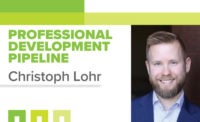In today’s digital age, having a great website, creating a personality for your plumbing business on social networking sites, and making yourself easily accessible to customers online have rightly become top marketing priorities for many businesses.
But, as attention spans shrink and your customers find themselves bombarded with online advertisements and email marketing, do you find yourself looking for a way to break through the noise of today’s hyper-connected digital world?
The answer is in your hands, quite literally. Print media, particularly trade magazines, still provide an effective and impactful way of cutting through the digital chaos and promoting a strong marketing message to a targeted group of professionals.
Traditionally, many see digital advertising as a threat to traditional print publishing. However, print cannot be replaced by digital; in reality, the two complement one another. Together, they offer you the opportunity to tailor your message and target your prospects across the channels they utilize most for information.
So, where do you start? Here are some important things to consider before you start purchasing advertising, both in print and digital.
Publication selection
Review the circulation, distribution and readership information of the magazines and channels you are considering. Study the content. Does the editorial directly address your niche within the sector? Get the advance features list from the publication(s) of choice, both in print and online, and then plan your ads around that.
A good way of judging a magazine’s credibility with the reader is if the publication tries to offer you editorial coverage in exchange for advertising. You might want to walk away from that magazine immediately, because you know the content is going to be advertising-driven rather than focused on engaging the readers.
Ad size
Yes, size matters, and every advertiser would like to have a double-page opening spread in full color. However, regularity and consistency are more important than doing an occasional big ad, so select a size you can afford to run on a series basis.
In general, smaller ads are the most efficient for direct response, while larger ads are best suited for brand building.
Ad format
If budget allows, do something different and more impactful, such as a belly-band, cover tip or a fold-out. Consider complementing your print ad with an ad on the magazine website during the same month.
This will allow for increased recognition, consistent messaging and improved brand recall among your potential customers.
Integrated campaigns
All marketing activities — advertising, PR and sales strategy — should be incorporated within the same plan. All media — print, online, exhibitions, email campaigns — should be coordinated. This enables marketers to leverage the “media multiplier effect,” whereby different activities feed off and enhance each other.
Not your father’s print advertising
With more companies taking their marketing efforts online, the old has become new again as print media becomes the new trend. But, this isn’t your parents’ world of print media communications.
Businesses have more information and data to make more deliberate decisions about advertising content, consumption, consumers, and collateral types. Customers’ and prospects’ email inboxes are overflowing with unsolicited ads and unworthy news, most of which is largely ignored.
With this in mind, the tips above should help guide you as you design your marketing initiatives with print at the center of your strategy.
This article was originally posted on www.pmmag.com.



